Internet of Things: Network Architecture and Protocols
Introduction
Let us know the definition below, i.e. IoT network architecture and protocols. We have to consider first what computer networks are and what will we call a protocol in order to grasp network architecture and protocol.
Computer Network
A computer network is a group of computers that use a set of common communication protocols over digital interconnections to share resources located on or provided by a network node. Interconnections between nodes are made up of a broad spectrum of telecommunications network systems, focused on terrestrial, optical, and wireless radio frequency solutions that can be organized in several network topologies.
Network Topology
Network topology is the structure, design, or organizational hierarchy of network host interconnections, as opposed to their physical or geographic location. Typically, most network diagrams are arranged according to their topology. The topology of the network can affect efficiency but stability is much more important.
Common types of Network Topologies:
- Bus Network
- Star Network
- Ring Network
- Mesh Network
- Hybrid Network
- Fully connected Network
- Tree Network
IoT Network Protocols
Before we dive into various types of IoT Network Protocols, you need to first know what is a network protocol.
Computer Network Protocol
Protocol, in computer science, a series of data transfer rules or protocols, such as machines, between electronic devices. Computers need to be agreed on how the information is organized and how each side will send and receive this information to exchange information. For instance, a computer could send its data in 8-bit packets without a protocol, while the recipient computer could expect the data in 16-bit packets. Global or industry-wide organizations develop protocols.
Examples of internet computer protocols include:
- http: Hypertext Transfer Protocol
- https: Hypertext Transfer Protocol Secured
- TCP/IP: Transmission Control Protocol/Internet Protocol
- ftp: File Transfer Protocol
- IMAP: Internet Message Access Protocol
- POP: Post Office Protocol
- SMTP: Simple Mail Transfer Protocol
- telnet: Terminal Network protocol
- UDP: User Datagram Protocol
- nntp: Network News Transfer Protocol
- MAC: Media Access Control protocol
- DNS: Domain Name System protocol
- DHCP: Dynamic Host Configuration Protocol
Now you have an idea about a network protocol, Let us understand IoT Networks, to better understand that let’s have a look at this picture.
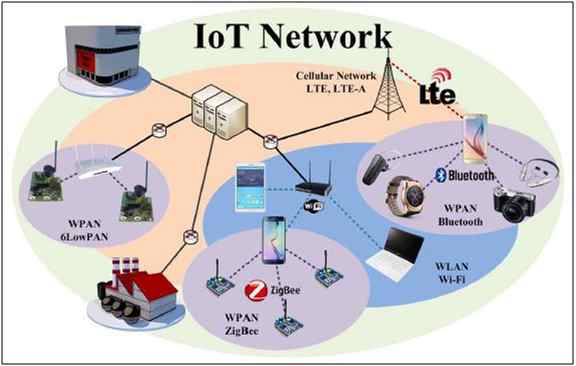
Figure: IoT Network
On a slightly larger wireless network area scale, a Wireless Local Area Network (WLAN) includes Wi-Fi.
Wearable IoT Networks
Wearable technology, wearables, fashion technology, tech togs, or fashion electronics are smart electronic devices (electronic device with micro-controllers) that are worn close to and/or on the surface of the skin, where they detect, analyze, and transmit information concerning e.g. body signals such as vital signs, and/or ambient data and which allow in some cases immediate biofeedback to the wearer.
- Wearable devices (for example, shoes, watch, glasses, belts, etc.) can be used to detect biometric information.
- Smart devices collect the information and communicate with the control center and/or medical server using the internet.
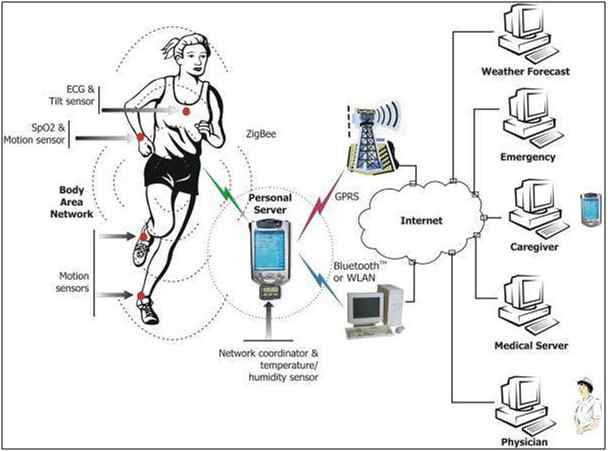 Figure: Wearable IoT Networks
Figure: Wearable IoT Networks
Wi-Fi
- Wi-Fi is a Wireless Local Area Network (WLAN) technology based on the IEEE 802.11 standards.
- Wi-Fi Devices.
- Smartphones, Smart Devices, Laptop Computers, PC, etc.
- Applications Areas.
- Home, School, Computer Laboratory, Office Building, etc.
- Wi-Fi devices and Access Points (APs) have a wireless communication range of about 30 meters indoors.
- Wi-Fi data rate is based on its protocol type :
- IEEE 802.11a can achieve up to 54 Mbps
- IEEE 802.11b can achieve up to 11 Mbps
- IEEE 802.11g can achieve up to 54 Mbps
- IEEE 802.11n can achieve up to 150 Mbps
- IEEE 802.11ac can achieve up to 866.7 Mbps
- IEEE 802.11ad can achieve up to 7 Gbps
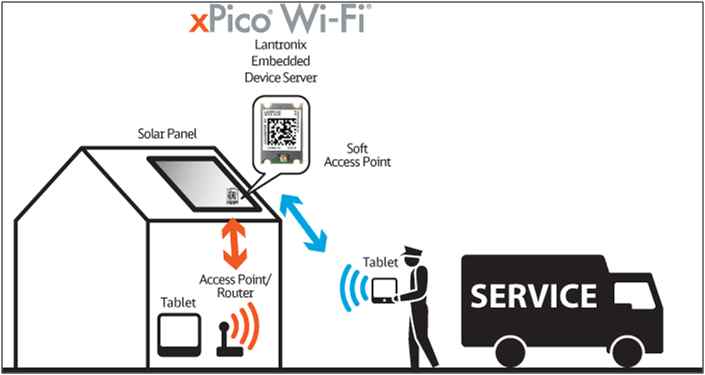 Figure: Wi-Fi IoT Networks.
Figure: Wi-Fi IoT Networks.
Bluetooth
- Bluetooth is a Wireless Personal Area Network (WPAN) protocol designed by the Bluetooth Special Interest Group (SIG).
- Replaces cables connecting many types of devices.
- Mobile phones and headsets.
- Heart monitors and medical equipment.
- Bluetooth’s standard PAN range is usually 10 meters (50 m in Bluetooth 4.0).
- Bluetooth Low Energy (in Bluetooth 4.0) provides reduced power consumption and cost while maintaining a similar communication range.
- Bluetooth 2.0 + EDR can achieve up to 2.1 Mbps.
- Bluetooth 3.0 + HS can achieve up to 24 Mbps.
- Bluetooth 4.0 can achieve up to 25 Mbps
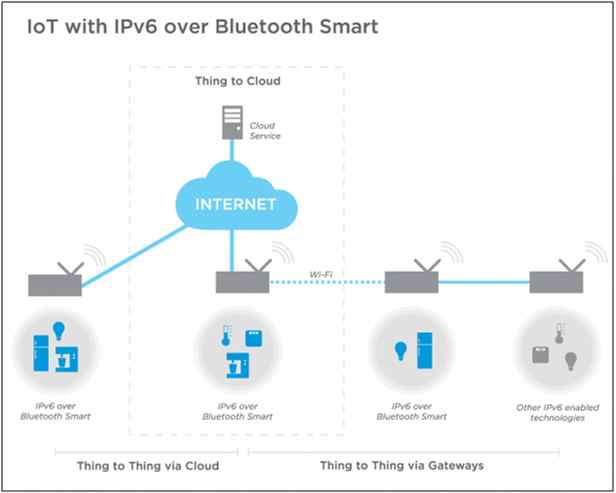 Figure: Bluetooth IoT Network
Figure: Bluetooth IoT Network
IEEE 802.15.4 Standard
- Low-cost, low-speed, low-power Wireless Personal Area Network (WPAN) protocol.
- IEEE 802.15.4 applications.
- ZigBee,
6LoWPAN (IPv6 over low-power Wireless Personal Area Networks), Highway
Addressable Remote Transducer (WirelessHART ), Radio Frequency for
Consumer Electronics (RF4CE), Microchip Wireless Protocol (MiWi), and
ISA100.11a
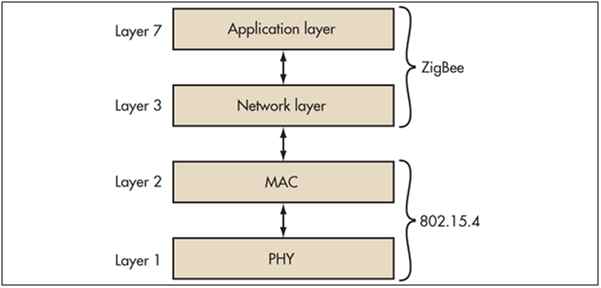 Figure: IEEE 802.15.4 and Zigbee layer in OSI Model.
Figure: IEEE 802.15.4 and Zigbee layer in OSI Model.
ZigBee
- Supported by the ZigBee Alliance.
- It provides IEEE 802.15.4 higher-layer protocols required for low-powered radio systems.
- IEEE 802.15.4 defines the physical and MAC layers.
- ZigBee provides the application and network-layer protocols.
- ZigBee works well in isolated network environments.
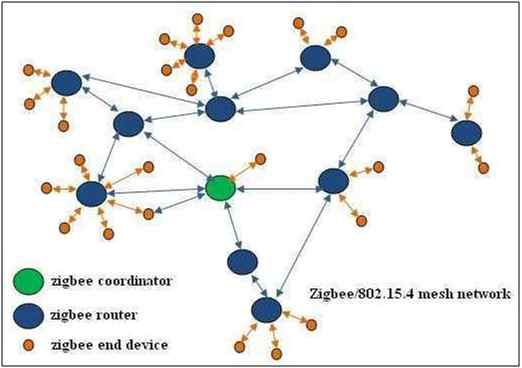 Figure: Zigbee Network
Figure: Zigbee Network
A
Zigbee network is made up of a Coordinator (C) that is required to
establish a network connection. Coordinator ‘C’ establishes a PAN, a
router (R), that provides the network connection to the end devices and
End Device (E) that are the IoT devices connected to the network.
The following describes an IPv6 over Low-power Wireless Personal Area Networks (6LoWPANs):
- Supports IPv6 packets over IEEE 802.15.4 WPANs.
- Enables IPv6 IoT wireless network support.
- Low power design included.
- Good for battery-operated IoT devices.
- 6LoWPAN is an Internet Engineering Task Force (IETF) standard that uses the IEEE 802.15.4 WPAN technology.
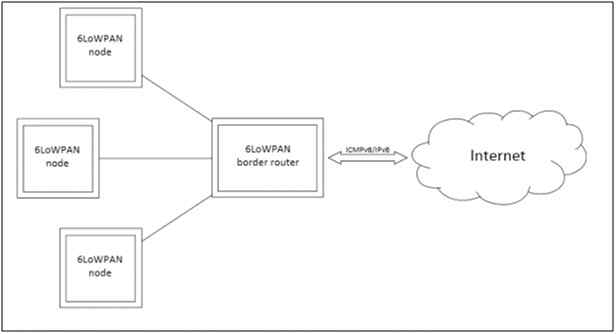 Figure: 6lowPAN
Figure: 6lowPAN
In
the 6LoWPAN node, Bluetooth smart devices can connect to the internet
over Bluetooth Smart using a border router. The border router acts as a
device connected to the internet and provides access for the nodes to
the internet.
The Z-Wave protocol is an interoperable, wireless, RF-based
communications technology designed specifically for control, monitoring
and status reading applications in residential and light commercial
environments.
Z-Wave
- Low-powered RF communications technology that supports full mesh networks without the need for a coordinator node.
- Operates in the sub-1GHz band, impervious to interference from Wi-Fi and other wireless technologies in the 2.4-GHz range (Bluetooth, ZigBee, etc.).
- Designed
specifically for control and status apps, supports data rates of up to
100kbps, with AES128 encryption, IPV6, and multi-channel operation.
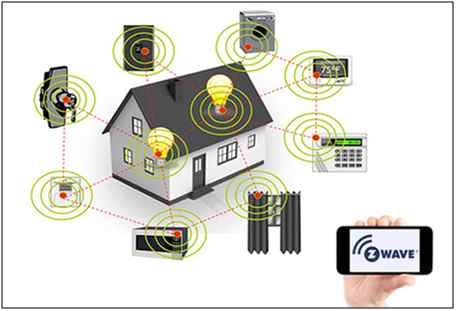 Figure: Z – wave applications
Figure: Z – wave applications
UDP
- Data networking protocol.
- Incorporated under the architecture of TCP/IP protocol.
- UDP is robust and that is why TCP/IP has mainly standardized UDP for real-time data transfer.
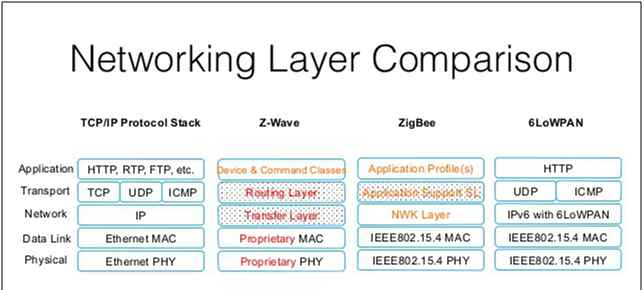 Figure: IoT Network Layers of the OSI model
Figure: IoT Network Layers of the OSI model
In the diagram below, we get a clear differentiation of the IP Suite and IP Smart Object (IoT) suite.
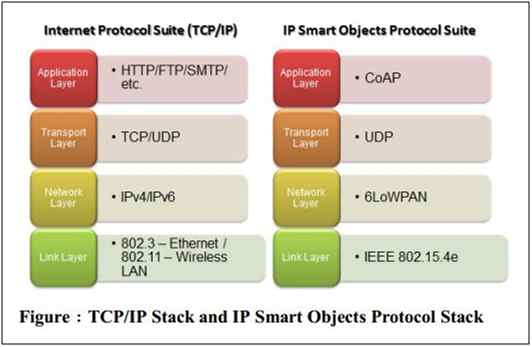

IoT Network Architecture
The design of a computer network is network architecture. It is a structure for describing the physical structures, features, and setup of a network, its operational standards and procedures, and the protocols used in communication.
Autonomous Network Architecture
- Autonomous networks are not connected to public networks. However, it does not mean that internet access is forbidden. It is possible via a gateway if required.
- While designing autonomous networks, though not mandatory, an IP protocol the suite is still commonly adopted due to its scalability and flexibility.
- The large address capacity provided by IPv6 is required in most cases.
Example: Autonomous
information collected by the parking sensor due to the occupancy of
parking slots in a wireless manner and sent to the control center.
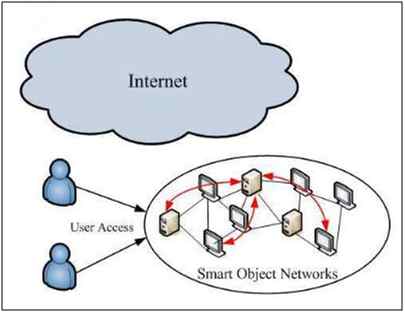 Ubiquitous Network Architecture
Ubiquitous Network Architecture

Figure: Autonomous Network Architecture
- Smart objects or "things" networks are a part of the internet.
- Using the internet gateway, authorized users will have access to the information provided by smart objects networks, either directly fetching from the device or using intermediate servers.
- The servers act as a sink to collect data from each object.
- Features
- Multitier: The network architecture is hierarchical, comprised of both multi-access networks and wireless multi-hop networks.
- Multiradio: It is uncommon these days to have many radio access technologies available to connect to the internet, either covering the same or complimenting geographical areas. These networks could be WLAN, WiMAX, macro-cellular, Femto-cellular, or even ad-hoc. The synergy and integration of multiple networks in the multi-access and multi-operator environment introduces new opportunities for better communication channels and an enhanced quality of provided applications and services.
Examples
Structural Health Monitoring: Monitoring
the health of any structure, large or small, like buildings, bridges, and so on. Passive wireless sensors are embedded within a concrete
structure that sends radio signals of suitable amplitude and phase
characteristics periodically using radio frequencies. The data collected from these sensors are then analyzed to detect anomalies.
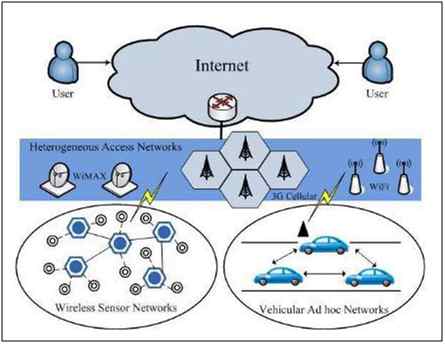 That’s all for this chapter. I hope this was helpful and you enjoyed reading!!
That’s all for this chapter. I hope this was helpful and you enjoyed reading!!

Figure: Ubiquitous Network Architecture
Author
Sukanya Mandal
0
978
627.6k
